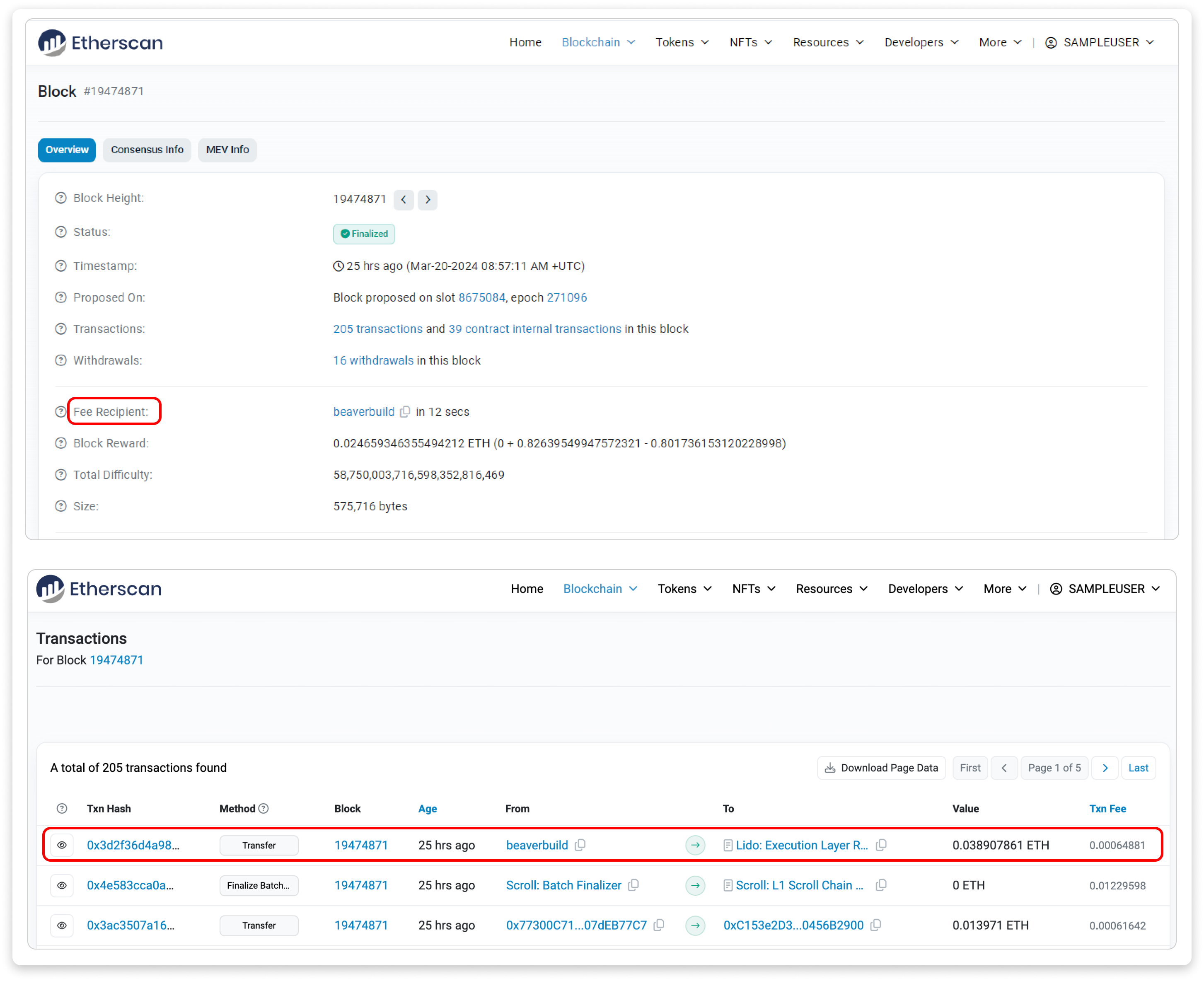In this article, we'll go through a basic understanding of the Fee Recipient field that can be found in the Blocks page.

Validator as Fee Recipient
After The Merge, Ethereum validators must propose valid blocks on the consensus layer to earn block rewards.
When they successfully propose a valid block, a block reward will automatically be sent to an address on the execution layer that they have designated as the recipient. Importantly, the address does not have to be owned by them. This address is the Fee Recipient address.

Fee Recipient by the validator to receive block rewardsBlock Builder as Fee Recipient
However, most validators on the network lack the expertise to optimize blocks for maximum value extraction. This has prompted the introduction of a new category of network participant: the block builder. Block builders are tasked with constructing profitable blocks on behalf of the validators, also known as Proposer-Builder Separation (PBS).
Currently, many builders and validators are implementing PBS through the off-protocol sidecar called MEV-Boost. A long term goal of the Ethereum protocol is to introduce an in-protocol PBS.
The block builder will establish an agreement with the validators, setting the builder's address as the block reward's Fee Recipient. Upon successfully building a block, the builder will include a transaction at the end of the block to transfer the pre-agreed profits to the validator.

Note: While MEV-Boost is implemented by a majority of builders and validators on Ethereum, there are other methods used to coordinate between them. These may include agreements and payments done off-chain.